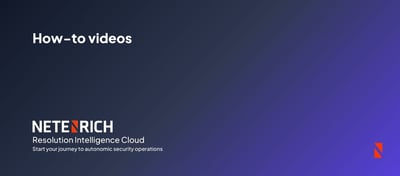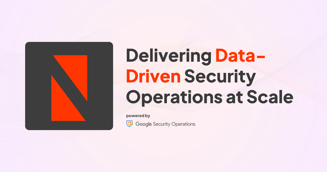Key Takeaways
- You must cleanup, normalize, and contextualize diverse data sources to ensure useful ingestion into Google SecOps.
- Data quality and consistency issues are often caused by misconfigured sensors or fragmented formats, and can derail detection. Regular governance and cleaning processes are essential.
- Managing real-time data streams is complex and resource-intensive. Without proper monitoring and retraining, data drift can weaken detection models over time.
- Strategic ingestion planning improves visibility, detection, and operational decision-making, reducing noise and improving efficacy.
Data is a critical lifeblood for many business functions, including security operations (SecOps). Getting the right data in place allows SecOps teams to track potential anomalies through the network, track root causes, and respond to security incidents. However, getting the necessary data ingested into the required tools can be challenging.
In our first two articles, we covered the technical configuration for Google SecOps ingestion and the steps involved in the data ingestion process. But as any engineer knows, theory is one thing, reality is another. In the real world, you'll inevitably face challenges. This article tackles the most common obstacles security teams encounter and provides best practices to overcome them.
Understanding the Importance of Data Ingestion in SecOps
Data ingestion is the process of collecting and importing telemetry data from networks, endpoints, cloud services, and more into a platform like Google SecOps. The data is normalized, enriched, and used to identify and respond to security incidents.
Ensuring that this data is in the right format and ready to be used is crucial to the effective operations of your security operations team. There's a lot of data to ingest for security operations teams to do their work, and this must be done effectively.
3 Common Data Ingestion Challenges in SecOps
Data ingestion provides a more holistic view of the organization, ensuring that SecOps teams have visibility into their full security posture. When data from the cloud, endpoints, networks, and APIs are ingested into a central tool like Google SecOps, you gain unparalleled insight.
Data ingestion is not without its challenges, though. These include:
- Handling diverse data sources
- Ensuring data quality and consistency
- Managing real-time data streams at scale
Each of these challenges can create gaps in detection, increase ‘noise’, or reduce the effectiveness of automation.
Challenge 1: Handling Diverse Data Sources
If you’ve ever lost a weekend trying to reconcile timestamp formats from an on-prem firewall with logs from a serverless cloud function, you understand the challenge of diverse data sources firsthand.
Every organization has diverse data sources that they have to contend with when ingesting data into their SecOps tool. This is no different with Google SecOps, which collects data from security information event management (SIEM) and security orchestration, automation, and response (SOAR) tools, as well as from threat intelligence, user behavior analytics, and other defensive solutions.
The most effective way you can handle these diverse data sources is through a process of data cleanup and unification, which we introduced in our guide on the data ingestion process.
This has the added benefit of adding context (aka situational awareness) to the security data that you're analyzing, ensuring that the SecOps team has the visibility they need when they need it.
This is best done at the implementation step of the process. Once you've decided to deploy a tool like Google SecOps, ensuring that your team has structured data ingestion processes effectively is key to handling diverse sources of information.
What works well here: Use Google’s Unified Data Model (UDM) to normalize disparate log formats into a common schema. This ensures consistent structure across all sources and enables built-in detection rules and analytics to work effectively.
Challenge 2: Ensuring Data Quality and Consistency
Data quality and consistency are other familiar issues with data ingestion. Disparate data sources collect information differently, and so transforming telemetry into something that can be centrally used and analyzed sometimes can surface data quality issues.
If a sensor isn't set up properly to collect data from a particular source, this can cause data quality issues. Data quality checks at ingest can help solve part of the problem of consistency. However, there's little likelihood that every possible instance of bad data can be caught or planned for.
Establishing clear data governance policies and running regular cleaning processes is the most effective way to ensure the overall quality of security telemetry data. This is especially powerful as the flow of data increases.
What works well here: Implement custom parsers to structure logs cleanly at the point of ingestion. Debug data and remove sensitive or irrelevant fields to comply with data regulations (e.g. GDPR compliance), and extract only the fields you need for detection.
Challenge 3: Managing Real-Time Data Streams
Managing real-time data streams is a challenge most security operations teams know well. The volume of data an average SecOps team must contend with is only increasing as teams leverage a wider variety of cloud data and APIs into day-to-day operations.
Multiple cloud workloads, end-user machines, APIs, networks, and other security data are constantly flowing into SecOps tools. Spending the time to manage all that data can reduce the time that security operations teams have to take action and make strategic decisions.
Data volume is not the only problem. Data drift, which refers to the characteristics of input data over time, can degrade tool efficacy and accuracy, and automated detection rules. For example, a fraud detection model trained on historical transaction patterns might become less effective if new fraud tactics emerge, or if user behavior or network traffic patterns dramatically shift.
What works well here: To resolve data drift, continuously monitor data streams for statistical anomalies or shifts. Time stamp logs from the source and regularly validate performance of detection rules and models against current threats. Establishing an iterative process for retraining or updating security controls with fresh, representative data is important to stay relevant and effective against evolving adversary behaviors.
Outsourcing the task of managing data streams can make a lot of sense to resolve this particular issue. That tactical work freed up would then mean that your internal teams can make the decisions that only they can make.
Data ingestion has a few key strategic challenges, including consistency and quality, as well as managing the chaos of real-time data flows. But these challenges are solvable, and addressing them early-on can prevent costly detection gaps down the line.
To understand how best to leverage hybrid cloud data and ingest it into Chronicle, make sure you check out Netenrich's Google SecOps 101 virtual bootcamp.
Frequently Asked Questions
1. What are common data ingestion challenges in security operations (SecOps)?
As we mentioned in our article, SecOps teams face three data ingestion challenges: managing diverse data sources, inconsistent schemas, and data drift. Beyond this, privacy regulations like PCI and GDPR also complicate what data you can ingest and how you store it. If you don’t address these issues, they can lead to higher storage costs, compliance risks, and weaker detection outcomes.
2. How do you overcome data quality issues in SecOps ingestion pipelines?
To overcome data quality issues in SecOps ingestion pipelines, start by establishing governance guardrails. Validate source configurations, clean up noisy logs, and enrich telemetry with relevant context. At ingestion, use custom parsers to standardize fields and strip out redundant or irrelevant data. Ongoing monitoring and feedback loops are key to spotting quality regressions before they affect detections.
3. How does data normalization help address ingestion challenges in Google SecOps?
Data normalization ensures all ingested data, including cloud, endpoint, and on-prem sources, conforms to a common schema. In Google SecOps, this happens via the Unified Data Model (UDM), which allows consistent parsing, correlation, and detection across sources. Without it, threat signals stay siloed and harder to act on.
4. What tools or best practices can solve SecOps data ingestion problems?
Use dedicated ingestion tools like Chronicle Forwarder or Bindplane to onboard structured logs securely. Pair that with a unified data strategy, normalize early, enrich contextually, and validate constantly.
Learn more about the best practices of Data Lake Ingestion.





